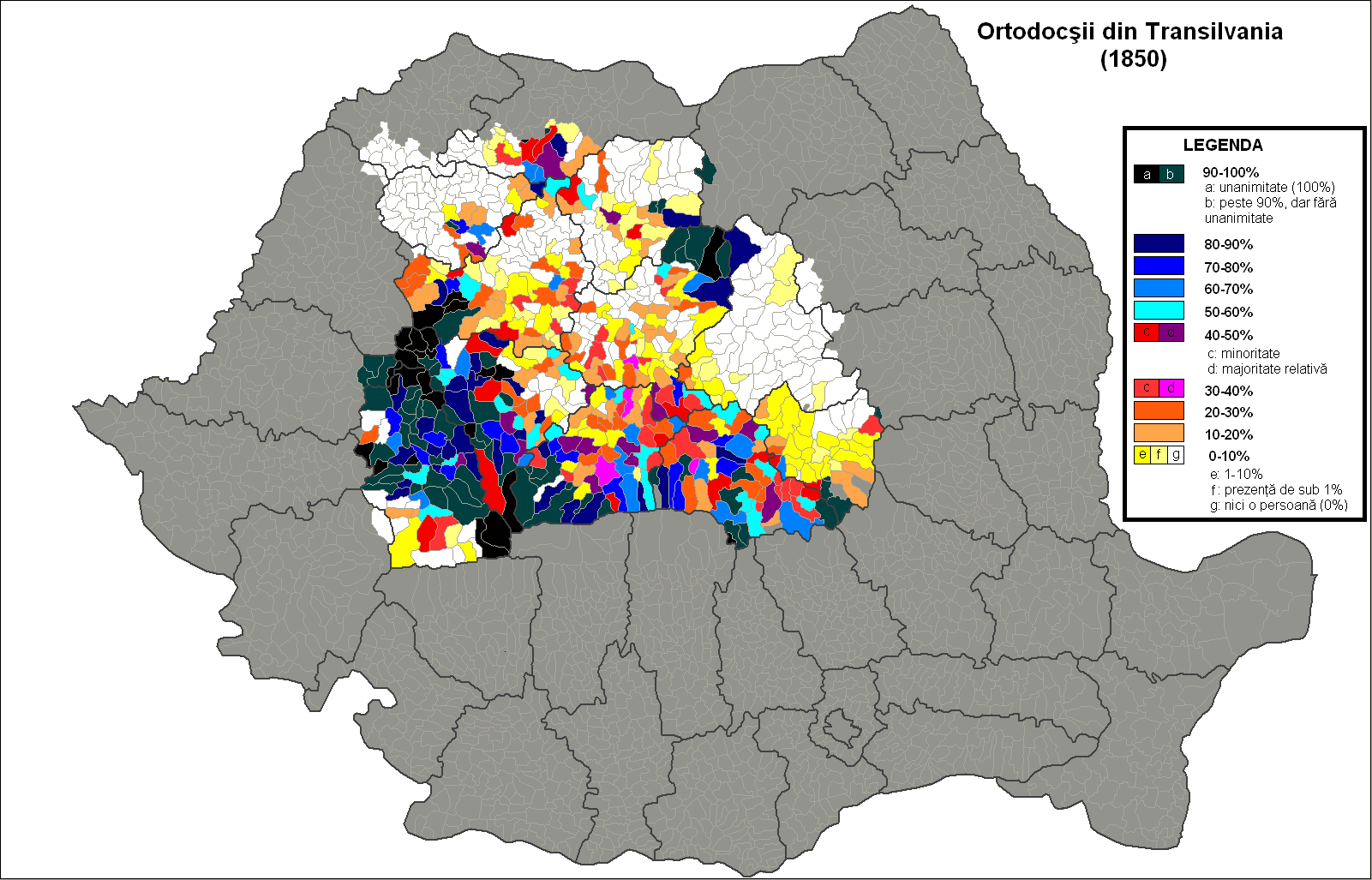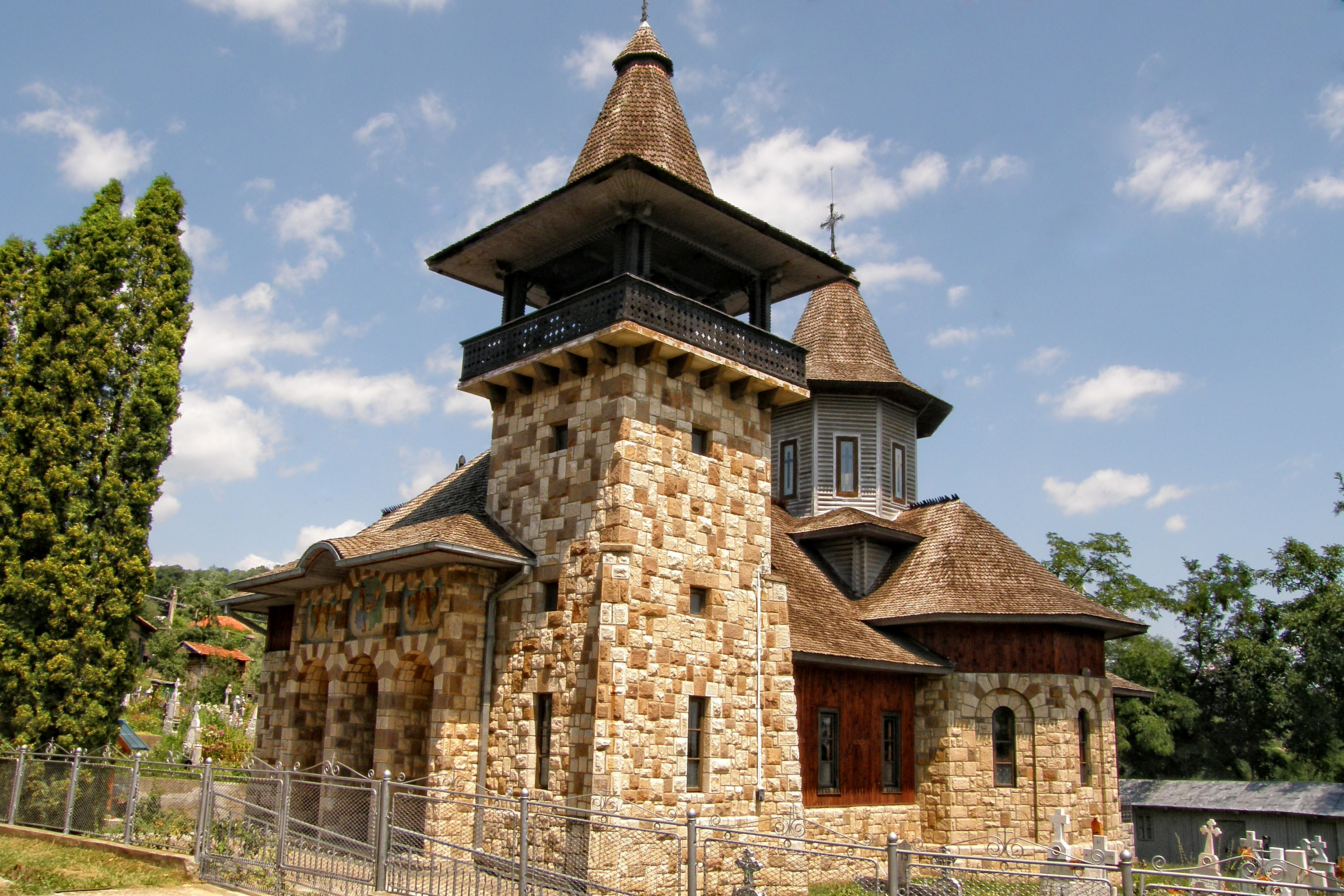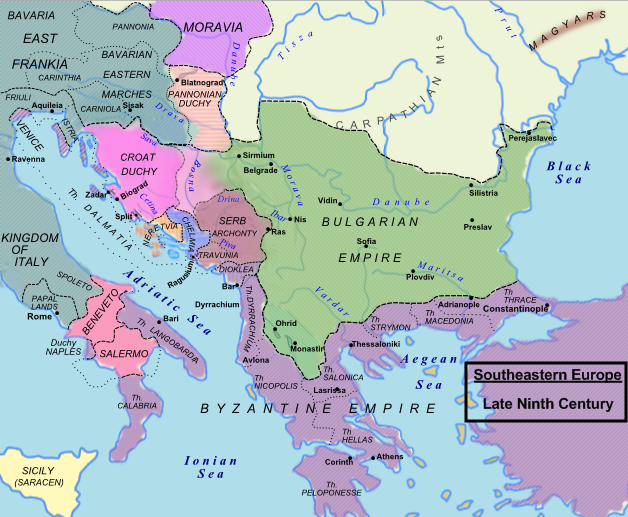|
Brebu Monastery
The Brebu Monastery in Romania is one of the most important architectural achievements of the rule of Matei Basarab and of Romanian art in the 17th century. Constructions began in 1640. The Romanian Orthodox monastery is located in the present-day locality of Brebu Mânăstirei, Prahova County, Romania. It is situated in the foothills of the Bucegi and Grohotiş Mountains. Architecture The architectural complex at Brebu is currently preserved in its initial form, being one of the few Romanian medieval monuments that is significantly preserved. The monastery's chapel is similar to that of the Dealu Monastery, and has dimensions of 30 x 10 m, constructed in a triconic formation, with a tower extending from the nave and another two smaller towers from the pre-nave. The walls of the chapel/church have a thickness of two metres, and are constructed from burnt bricks and stone. The exterior decoration is characteristic of Wallachian architecture at that time, being fairly devoid of or ... [...More Info...] [...Related Items...] OR: [Wikipedia] [Google] [Baidu] |
Romania
Romania ( ; ro, România ) is a country located at the crossroads of Central, Eastern, and Southeastern Europe. It borders Bulgaria to the south, Ukraine to the north, Hungary to the west, Serbia to the southwest, Moldova to the east, and the Black Sea to the southeast. It has a predominantly temperate- continental climate, and an area of , with a population of around 19 million. Romania is the twelfth-largest country in Europe and the sixth-most populous member state of the European Union. Its capital and largest city is Bucharest, followed by Iași, Cluj-Napoca, Timișoara, Constanța, Craiova, Brașov, and Galați. The Danube, Europe's second-longest river, rises in Germany's Black Forest and flows in a southeasterly direction for , before emptying into Romania's Danube Delta. The Carpathian Mountains, which cross Romania from the north to the southwest, include Moldoveanu Peak, at an altitude of . Settlement in what is now Romania began in the Lower Pale ... [...More Info...] [...Related Items...] OR: [Wikipedia] [Google] [Baidu] |
Matei Basarab
Matei Basarab (; 1588, Brâncoveni, Olt – 9 April 1654, Bucharest) was a Wallachian Voivode (Prince) between 1632 and 1654. Reign Much of Matei's reign was spent fighting off incursions from Moldavia, which he successfully accomplished in 1637, 1639, and 1653 – see Battle of Finta. He was an enlightened ruler, and is noted for introducing the printing press to Wallachia (1634) and creating the first Wallachian code of laws as well as patronizing art and religion (founder of the first upper school in his Principality). He built more than 45 churches and monasteries, being compared to Stephen the Great, the famous ruler of Moldavia. His election in 1632 signified the first official exception to a rule set by custom. Basarab was merely a boyar (of the Craiovești family) and one not related to previous Princes (although it seems that a similar point can be made about such rulers as Michael the Brave). The reason for this choice has been explained as a reaction of indigenou ... [...More Info...] [...Related Items...] OR: [Wikipedia] [Google] [Baidu] |
Romanian Orthodox Church
The Romanian Orthodox Church (ROC; ro, Biserica Ortodoxă Română, ), or Patriarchate of Romania, is an autocephalous Eastern Orthodox church in full communion with other Eastern Orthodox Christian churches, and one of the nine patriarchates in the Eastern Orthodox Church. Since 1925, the church's Primate bears the title of Patriarch. Its jurisdiction covers the territories of Romania and Moldova, with additional dioceses for Romanians living in nearby Serbia and Hungary, as well as for diaspora communities in Central and Western Europe, North America and Oceania. It is the only autocephalous church within Eastern Orthodoxy to have a Romance language for liturgical use. The majority of Romania's population (16,367,267, or 85.9% of those for whom data were available, according to the 2011 census data), as well as some 720,000 Moldovans, belong to the Romanian Orthodox Church. Members of the Romanian Orthodox Church sometimes refer to Orthodox Christian doctrine as '' ... [...More Info...] [...Related Items...] OR: [Wikipedia] [Google] [Baidu] |
Brebu Mânăstirei
Brebu is a commune in Prahova County, Muntenia, Romania. It is composed of four villages: Brebu Mânăstirei (the commune centre), Brebu Megieșesc, Pietriceaua and Podu Cheii. The commune is located in the northern part of the county. The river Purcaru The Purcaru is a left tributary of the river Doftana in Romania Romania ( ; ro, România ) is a country located at the crossroads of Central Europe, Central, Eastern Europe, Eastern, and Southeast Europe, Southeastern Europe. It borders ... flows through it. References Brebu Localities in Muntenia {{Prahova-geo-stub ... [...More Info...] [...Related Items...] OR: [Wikipedia] [Google] [Baidu] |
Prahova County
Prahova County () is a county (județ) of Romania, in the historical region Muntenia, with the capital city at Ploiești. Demographics In 2011, it had a population of 762,886 and the population density was 161/km². It is Romania's third most populated county (after the Municipality of Bucharest and Iași County), having a population density double that of the country's mean. * Romanians - 97.74% * Romas and others - 2.26% The county received an inflow of population who have moved here due to the industrial development. Geography This county has a total area of 4,716 km². The relief is split in approximately equal parts between the mountains, the hills and the plain. In the North side there are mountains from the southern end of the Eastern Carpathians - the Curvature Carpathians group; and the Bucegi Mountains the Eastern end of the Southern Carpathians group. The two groups are separated by the Prahova River Valley. The south side of the county is a plain, ... [...More Info...] [...Related Items...] OR: [Wikipedia] [Google] [Baidu] |
Bucegi Mountains
The Bucegi Mountains (Romanian: ''Munții Bucegi'' ) are located in central Romania, south of the city of Brașov. They are part of the Southern Carpathians group of the Carpathian Mountains. At , '' Omu'' is its highest point. To the east, the Bucegi Mountains have a very steep slope towards the popular tourist destinations in the Prahova Valley, such as Bușteni and Sinaia. At a higher elevation is the Bucegi Plateau, where wind and rain have turned the rocks into spectacular figures such as the Sphinx and '' Babele''. The Bucegi is believed to be the Dacian holy mountain ''Kogainon'', on which the God Zalmoxis resided in a cave. Name The exact origin of the name "Bucegi" is disputed by philologists. "Buceag" or "bugeac" seems to be the source of the name, a word designating in the language of mountain people both the moss in the forest and the wilderness or the junipers. An archaic version of the name "Bucegi" is "Buceci", name still used today by elders in the mountains, ... [...More Info...] [...Related Items...] OR: [Wikipedia] [Google] [Baidu] |
Dealu Monastery
Dealu Monastery is a 15th-century monastery in Dâmbovița County, Romania, located 6 km north of Târgoviște. The church of the monastery is dedicated to Saint Nicholas. Necropolis Dealu Monastery narthex is considered one of the largest funerary spaces in the country, here being buried several voivodes, princes and clergymen. In chronological order, those buried at Dealu Monastery are: * Vlad II Dracul (cca. 1390–1447), Prince of Wallachia * Vladislav II (d. 1456), Prince of Wallachia * Radu IV cel Mare (1467–1508), Prince of Wallachia * Vlad V cel Tânăr (1488–1512), Prince of Wallachia * Radu VI Bădica (d. 1524), Prince of Wallachia * Vlad VII Înecatul (d. 1532), Prince of Wallachia * Head of Mihai Viteazul Michael the Brave ( ro, Mihai Viteazul or ; 1558 – 9 August 1601), born as Mihai Pătrașcu, was the Prince of Wallachia (as Michael II, 1593 – 1601), Prince of Moldavia (1600) and ''de facto'' ruler of Transylvania (1599 – 1600). . ... [...More Info...] [...Related Items...] OR: [Wikipedia] [Google] [Baidu] |
Wallachia
Wallachia or Walachia (; ro, Țara Românească, lit=The Romanian Land' or 'The Romanian Country, ; archaic: ', Romanian Cyrillic alphabet: ) is a historical and geographical region of Romania. It is situated north of the Lower Danube and south of the Southern Carpathians. Wallachia is traditionally divided into two sections, Muntenia (Greater Wallachia) and Oltenia (Lesser Wallachia). Dobruja could sometimes be considered a third section due to its proximity and brief rule over it. Wallachia as a whole is sometimes referred to as Muntenia through identification with the larger of the two traditional sections. Wallachia was founded as a principality in the early 14th century by Basarab I after a rebellion against Charles I of Hungary, although the first mention of the territory of Wallachia west of the river Olt dates to a charter given to the voivode Seneslau in 1246 by Béla IV of Hungary. In 1417, Wallachia was forced to accept the suzerainty of the Ottoman Emp ... [...More Info...] [...Related Items...] OR: [Wikipedia] [Google] [Baidu] |
Moldavia
Moldavia ( ro, Moldova, or , literally "The Country of Moldavia"; in Romanian Cyrillic: or ; chu, Землѧ Молдавскаѧ; el, Ἡγεμονία τῆς Μολδαβίας) is a historical region and former principality in Central and Eastern Europe, corresponding to the territory between the Eastern Carpathians and the Dniester River. An initially independent and later autonomous state, it existed from the 14th century to 1859, when it united with Wallachia () as the basis of the modern Romanian state; at various times, Moldavia included the regions of Bessarabia (with the Budjak), all of Bukovina and Hertsa. The region of Pokuttya was also part of it for a period of time. The western half of Moldavia is now part of Romania, the eastern side belongs to the Republic of Moldova, and the northern and southeastern parts are territories of Ukraine. Name and etymology The original and short-lived reference to the region was ''Bogdania'', after Bogdan I, th ... [...More Info...] [...Related Items...] OR: [Wikipedia] [Google] [Baidu] |
Sava Henția
Sava Henția (1 February 1848, Sebeșel - 21 February 1904, Sebeșel) was an Imperial Austrian-born Romanian painter, decorator and illustrator. Biography He was one of fourteen surviving children of a priest. In 1862, after finishing his primary education, he was apprenticed to an uncle, who taught him how to retouch photographs.Brief biography @ the Sebeș website. The following year, he caught and the that was used to treat it damaged his hearing. His work with photographs encouraged him to pursue a career in art. From 1865 to 1870, he studied at the |




